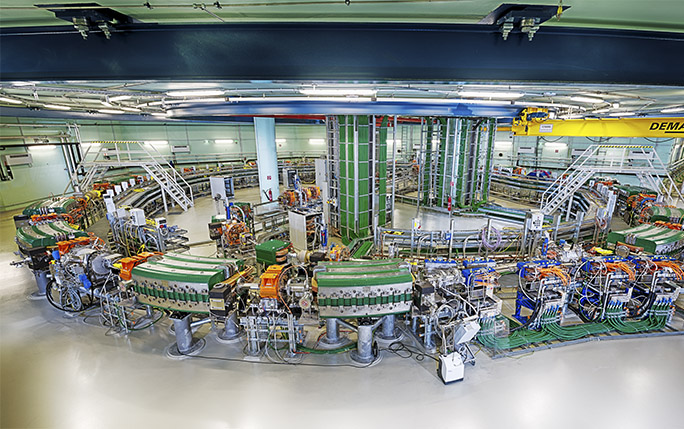Working towards next-generation cancer treatments

OMA partner CERN’s Next Ion Medical Machine Study (NIMMS) aims to drive a new European effort for ion-beam therapy based on smaller, cheaper accelerators that allow faster treatments, operation with multiple ions, and patient irradiation from different angles using a compact gantry system. Its predecessor the Proton-Ion Medical Machine Study (PIMMS), which was undertaken at CERN during the late 1990s, underpinned the treatment centres of OMA partner institutions CNAO (Italy) and MedAustron (Austria) that helped propel Europe to the forefront of hadron therapy.
Covering the period 2021–2024, two recently approved EC Horizon 2020 Research Infrastructure projects will support NIMMS while also connecting its activities to collaborating institutes throughout Europe. The multidisciplinary HITRIplus project (Heavy Ion Therapy Research Integration), includes work packages dedicated to accelerator, gantry and superconducting magnet design. The IFAST project (Innovation Fostering in Accelerator Science and Technology), lead by CERN, will include activities on prototyping superconducting magnets for ion therapy with industry, together with many other actions related to advanced accelerator R&D.
“Over the past three years we have collected about €4 million of EC contributions, directed to a collaboration of more than 15 partners, representing about a factor of eight leverage on the original CERN funding,” says NIMMS project leader Maurizio Vretenar. “A key achievement was the simultaneous approval of HITRIplus and IFAST because they contain three strong work packages built around the NIMMS work-plan and associate our work with a wide collaboration of institutes.”
A major NIMMS partner is the new South East European International Institute for Sustainable Technologies (SEEIIST), an initiative started by former CERN Director-General Herwig Schopper and former minister of science for Montenegro Sanja Damjanovic, which aims to build a pan-European facility for cancer research and therapy with ions in South East Europe. OMA partner institutions CNAO and MedAustron are closely involved in the superconducting gantry design, CIEMAT in Spain will build a high-frequency linac section, and INFN is developing new superconducting magnets, with the TERA Foundation continuing to underpin medical-accelerator R&D.
Also successful in securing new Horizon 2020 funding is a project built around CERN’s MEDICIS facility, which is devoted to the production of novel radioisotopes for medical research together with institutes in life and medical sciences. The PRISMAP project (the European medical isotope programme) will bring together key facilities in the provision of high-purity-grade new radionuclides to advance early-phase research into radiopharmaceuticals, targeted drugs for cancer, “theranostics” and personalised medicine in Europe.
Together with other project consortia, the MEDICIS and HITRIplus teams are also working to identify the relevance of their research for the EC’s future cancer mission, which is part of its next framework programme, Horizon Europe, beginning this year.
Read original article in CERN Courier https://cerncourier.com/a/european-projects-boost-cerns-medical-applications/